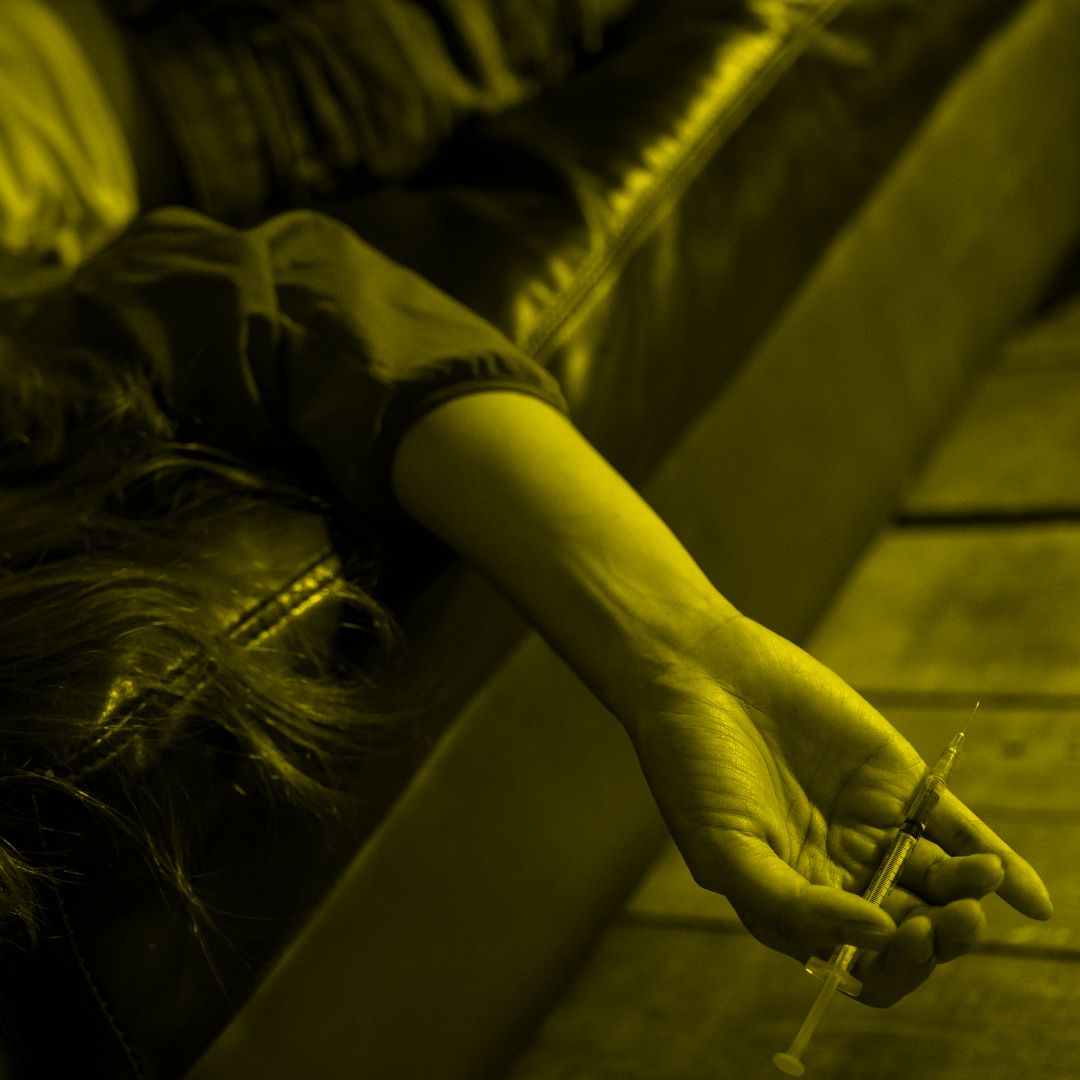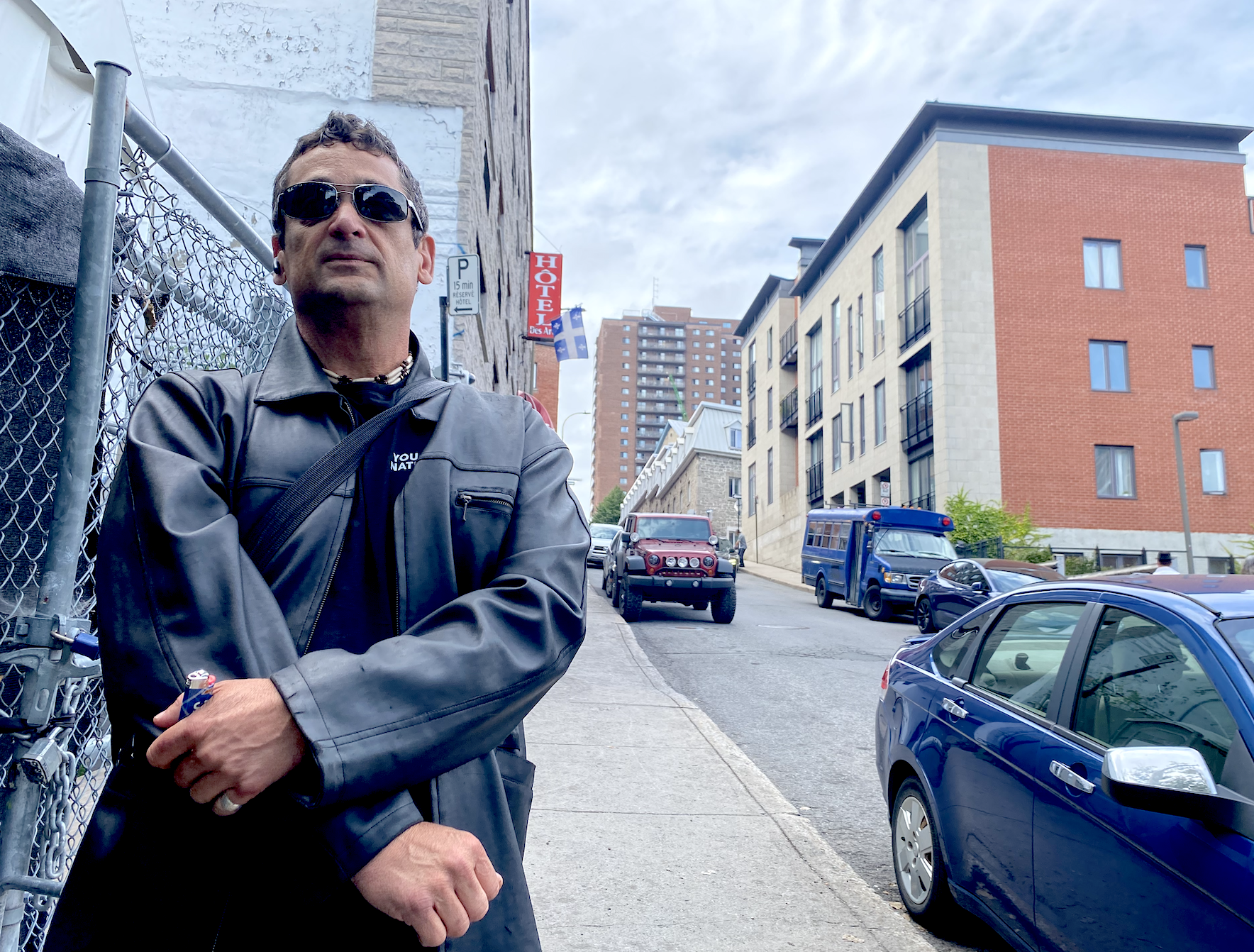Woman dies after an explosion of drug poisonings in Montreal

Fentanyl claims another life on the streets east of downtown.
By Christopher Curtis. The Rover. September 13, 2023
Introduction : La Dernière Ambulance s'est associée à The Rover pour partager du contenu. Je suis ravi de pouvoir partager le journalisme primé de The Rover avec nos lecteurs et de voir notre journalisme percutant honorer les pages de The Rover. / The Last Ambulance has partnered with The Rover to share content. I am excited to be able to share The Rover's award-winning journalism with our readers and to have our hard-hitting journalism grace the pages of The Rover.

Pierre Parent’s hands shook when he told me the news.
“I just found out they’re pulling the plug on her,” Parent said. “She was a good soul. This is heartbreaking.”
She is a Cree woman who overdosed on fentanyl last weekend. It was one of nine drug poisonings that hit downtown in a two-hour window Sunday.
Sources say seven of the victims are Indigenous and living on the streets of Montreal. They overdosed within moments of each other on a sidewalk around the corner from the Native Friendship Centre. The victims bought crack cocaine off a dealer notorious for selling spiked batches, Parent said. Two sources say the dealer goes by “Mad Max” and hasn’t been seen since Sunday.
Montreal’s public health department is investigating the source of the contaminated drugs but, in the back alleys and sidewalks along Ontario Street, people are taking matters into their own hands.
“I’m pretty sure (the dealer is) in hiding because people are out there looking for him,” said Parent, a Cree intervention worker. “It’s sort of like a warrior council, Indigenous community members getting together, talking it out and then taking action. I suspect they’ll tell him he isn’t welcome here anymore. No violence or anything like that, just a stern conversation.
“People don’t realize that, out here, there’s not many people looking out for Indigenous folks so the community looks out for itself.”
One of the victims, a Cree woman, died Tuesday after being in a coma since the weekend. Parent says the hospital took her off life support once her family made it down from James Bay to say goodbye. She had been a resident at the Native Women’s Shelter of Montreal and her street friends describe the victim as a kind, determined woman and “the best homie you could ask for out here.”
“Last week, I went to a memorial for three of our Indigenous brothers who died on the street,” said Parent, his hands still shaking. “Just 10 days ago, someone I knew well died of a heart attack, possibly from an overdose. This is destroying our people.”
Parent walked me around the block Tuesday afternoon, stopping outside a fleabag motel that’s been converted to an emergency shelter for Indigenous people. It was workers at the shelter who rushed onto the street to initiate resuscitation efforts. They administered Naloxone — a life-saving drug that counteracts the effects of opioids including Fentanyl — and were almost able to save everyone.
Almost everyone.
“Naloxone, never leave home without it,” said Parent, gripping a pouch with a red cross on it. “I’ve had to use my kit twice and I can say it’s an incredibly scary feeling. Your hands shake, you’re hoping and praying it’ll bring them back. It’s traumatic, the person is dying in front you, they’re going blue right there in front of you.”
Parent started his job three years ago, just as an unprecedented wave of Fentanyl overdoses was killing an average of two people a day in Quebec. Before the pandemic, Montreal was one of the few North American cities spared from the worst of the opioid crisis. But during a brief disruption in the city’s drug supply in 2020, dealers started cutting their dope with Fentanyl — which is easier to source than heroin but 50-100 times more potent.
Things haven’t been the same since.
The crisis weighs heavily on frontline workers across the city. Paramedics with Urgences-Santé intervened in 291 overdoses last year — an unprecedented number in Montreal. By September 10th, paramedics had already administered Narcan 223 times this year and were on pace to set a new record for overdose interventions.
“I have a lot of empathy for the workers who choose to be in this fight because it’s only getting worse every day,” said Janice Qavavauq Bibeau, the research coordinator for Iskwew — a project that aims to eradicate the crisis of missing and murdered Indigenous women in Montreal.
“Right now, the best we can hope for is more harm reduction because the resources for prevention aren’t there. We need testing kits and we need more safe injection sites. When I work with clients, and they want to get sober, they want that sobriety now. But there’s never space. They might be able to get a bed for a medical detox but there’s a long waiting list to get into rehab. And the longer that person waits, the more they’re in danger.
“Some days, it just doesn’t feel like anyone cares or notices.”
Montreal’s homelessness and overdose crises have disproportionately affected Indigenous people. Up north, in the Inuit villages of Nunavik, a critical housing shortage pushes vulnerable people to come to Montreal rather than live in a three bedroom house with 14 others. A lack of access to healthcare in the north also pushes people towards the city.
But once in Montreal, Inuit find a whole new set of obstacles. Some landlords won’t rent to Inuit, police are 11 times more likely to subject Indigenous women to “random” checks than if they were white and there are documented cases where hospitals refused to treat Indigenous patients.
Perhaps the most alarming figure is that while Indigenous people account for less than 1 per cent of Montreal’s population, 10 per cent of the city’s unhoused population is Indigenous. There are three shelters that specifically cater to Indigenous people but hundreds still sleep on the street every night.
Out there, where people have to live in a constant state of alertness, there’s a temptation to self-medicate with drugs and alcohol. What’s changed, since COVID-19, is the presence of Fentanyl not only in heroin but also in crack cocaine.
“I was dead from an overdose six weeks ago,” said one man, who did not want his name published. “I smoked some rock and felt myself start to slip. My girlfriend gave me Naloxone because I was out. Not breathing, no pulse. I woke up six hours later in a fog. It was incredibly traumatic. I thought about my dad, who died a few years ago, and about all the things we never got to say to each other.
“I haven’t touched crack since that happened. But some people can’t stop and it’s scary to think this might keep happening.”